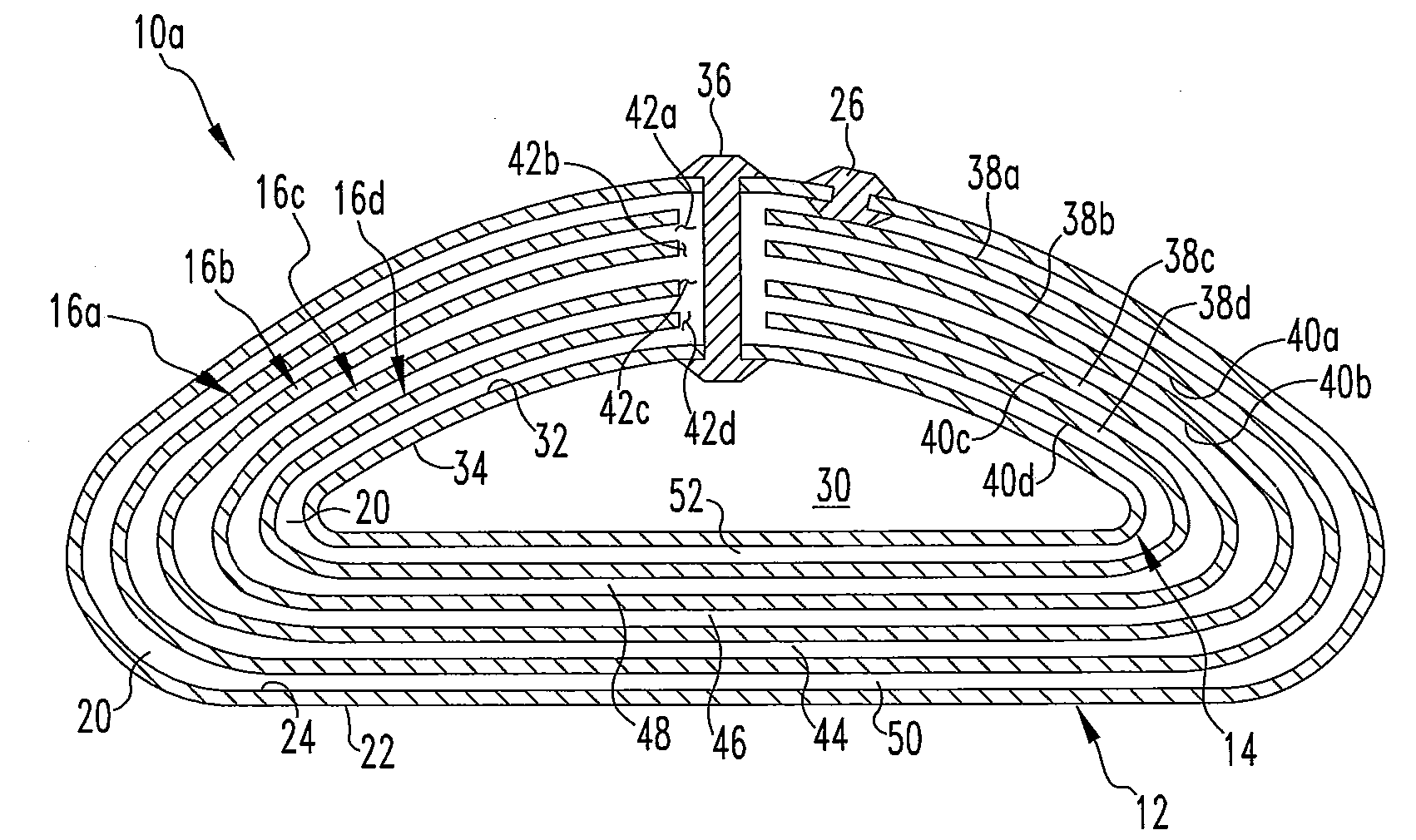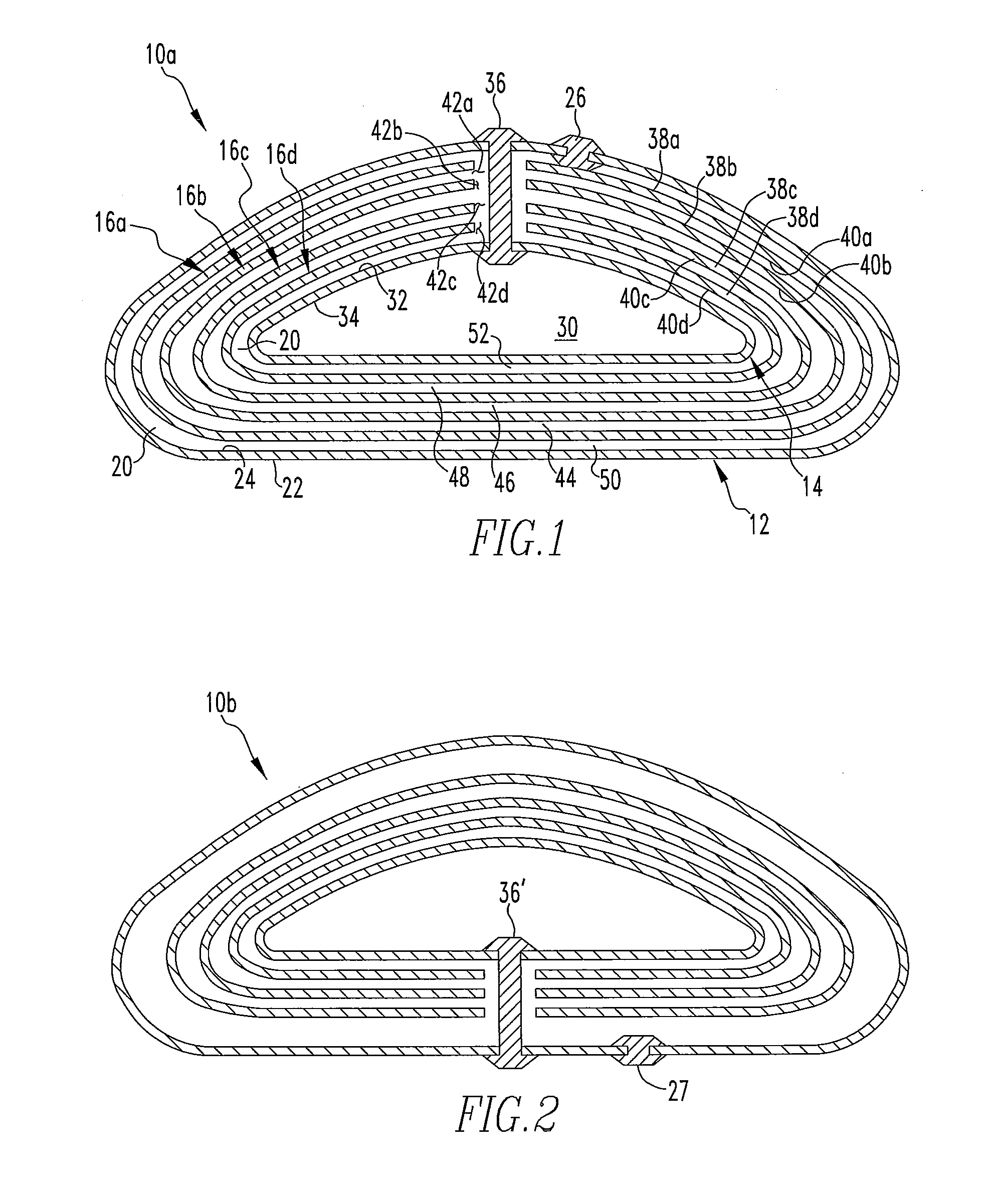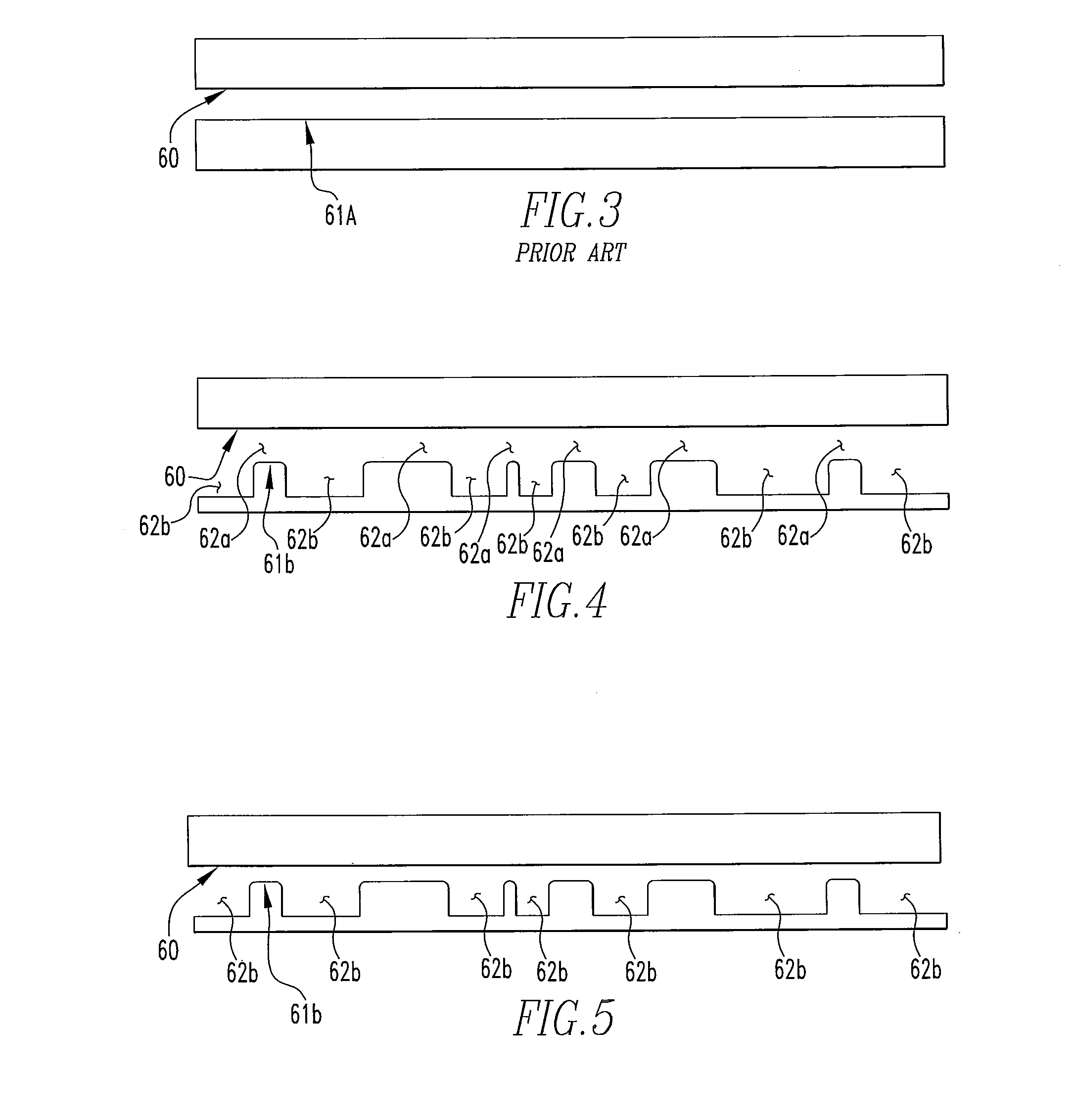Breast Implant with Low Coefficient of Friction Between Internal Shells in an Aqueous Fluid Environment
a technology of internal shells and friction coefficients, applied in the field of surgically implantable prosthetic devices, can solve the problems of inability to detect lack of proper appearance and tactile properties of prior art saline solution filled prosthetic devices, and difficulty in detecting the rupture of the envelope of a silicone gel implant, etc., to achieve low friction coefficient, prevent intermittent sticking and friction between the interacting shells, and high sliding ability
- Summary
- Abstract
- Description
- Claims
- Application Information
AI Technical Summary
Benefits of technology
Problems solved by technology
Method used
Image
Examples
Embodiment Construction
[0028]Referring to FIGS. 1 and 2, implants 10a and 10b are particularly adapted for use as a surgically-implantable mammary prosthesis. The implant 10a of FIG. 1 includes an outer shell 12 enclosing a lumen or a compartment, an inner shell 14 enclosing a lumen or a compartment, and one or more generally dome-shaped non-enclosing fitted shells, e.g., a first non-enclosing fitted shell 16a, a second non-enclosing fitted shell 16b, a third non-enclosing fitted shell 16c and a fourth non-enclosing fitted shell 16d. The inner shell 14 and outer shell 12 are typically sealed with silicone “patches” by means known to those skilled in the art. In a particularly desirable embodiment, with reference to the implant 10a as it is oriented in the drawing, the dimensions of the outer shell 12 and the inner shell 14 are defined by a diameter measurement and a projection measurement. The diameter measurement is representative of the width of the implant 10a at its widest point and the projection mea...
PUM
 Login to View More
Login to View More Abstract
Description
Claims
Application Information
 Login to View More
Login to View More - R&D
- Intellectual Property
- Life Sciences
- Materials
- Tech Scout
- Unparalleled Data Quality
- Higher Quality Content
- 60% Fewer Hallucinations
Browse by: Latest US Patents, China's latest patents, Technical Efficacy Thesaurus, Application Domain, Technology Topic, Popular Technical Reports.
© 2025 PatSnap. All rights reserved.Legal|Privacy policy|Modern Slavery Act Transparency Statement|Sitemap|About US| Contact US: help@patsnap.com



